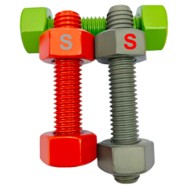
Untangling outfit numerics can feel like mapping a private cipher
- Noting your individual frame starts the sizing journey
- Collect correct chest, waist and hip data to confirm fit
- Consult each label's size guide prior to purchase
Steer clear of relying just on marked sizes which may confuse Prefer matching your own dimensions against the guide. Finding style remains a personal exploration and trial.
Deciphering the puzzle of measurement charts
Clothing fit inconsistencies frustrate buyers across regions. Making sense of size matrices can tax the average shopper, because markers vary from maker to maker across markets. Still, simple knowledge and tools let you overcome sizing puzzles.
- Begin by familiarising yourself with varied sizing systems. Often these include US, UK, European and Asian formats.
- Move on to examine bust, waistline, hip and length dimensions. Compare the brand's numbers to your body data.
- Finally, consult the brand's own fit guide for tips and exceptions. Guides frequently offer tips, fit notes and sizing caveats.
Securing the ideal fit as you shop
The world of fit charts frequently presents challenges. Because of varied charts, medium can equal small at other stores. Variability reflects the individual measurement rules of each company. Consequently first take careful measurements of your body. Use a fabric tape to record bust, waist and hip measurements. Avoid relying purely on your customary size label. Sizes may change even inside the same brand depending on style. Honing in on ideal fit calls for tests across sizes and shapes.

Weighing standard sizing against custom solutions
For certain products the decision is between off-the-shelf and made-to-fit options. Both alternatives have strengths and weaknesses to consider. Generic sizes supply ready availability and cost benefits. If you have an unusual space or special requirement custom may suit better
- Gauge your priorities and budget to guide the decision
- Collect precise size data whether for room or clothing
- Compare sellers and their offerings before committing
Ultimately the best size depends on your own situation.
Solving the puzzle of size translation across regions
Moving between global size conventions can present tangled routes. Luckily useful conversion charts and guides exist to assist. First, acquaint yourself with typical clothing and shoe scaling frameworks. Apply size conversion tables to translate between markers. Remember that figure and proportions affect how garments sit. Check reviews and fit reports to confirm expected sizing.
Decoding fit: sizing made simple
Tackling clothing charts often feels baffling. Brands often implement distinct sizing philosophies, however a few pointers here will make the charts approachable.
- Begin with correct self-measurement using a flexible tape
- Next, align your measurements with the brand's size table
- Consider your silhouette because form affects fit perception
In the end, trying items on gives the clearest sense of fit.
The ultimate chart for both men's and women's dimensions
Browsing digitally makes sizing decisions more complicated. Hence we've put together a comprehensive manual for gendered charts. In buying pants, shirts or dresses these tips clarify the right size.
- To start, note that sizes differ among makers and regions
- Thereafter, collect waist, hip, bust and torso stats carefully
- If unsure, consider selecting the next larger size
Using the above rules helps you navigate size charts confidently. Enjoy your shopping experience!

A straightforward guide to kids' clothing measurements
Figuring out correct kids' sizes can be a demanding task. Kids' fast development means you must re-measure frequently. Rely on the label's measurements instead of suggested ages. Obtain chest, waist and height data to match the size chartAccurate bust, waist and hip measuring techniques
Ensuring garments fit well begins with correct body stats. You will need a flexible tape and perhaps a helper to get precise readings. Stay erect with shoulders relaxed and feet shoulder-width apart
Understanding how sizes span from XS up to XXL
The fashion industry's size landscape is often fragmented. Wide inter-brand variation erodes uniformity in sizing. Inspecting size ranges reveals how labels map to measurements. Next we will examine how letters and sizes translate to fit!
Uplifting diverse body shapes

Honouring size diversity invites respect for varied forms. It encourages resisting pressures that privilege a single size. Together we can encourage inclusion and body positivity everywhere.
- Choose body positivity and self-acceptance every day Choose body positivity and self-acceptance every day Choose body positivity and self-acceptance every day Commit daily to encouraging body acceptance Size Chart and love
- Stay mindful that beauty resides in many different shapes
- Refuse to accept narratives that limit what bodies should look like
- Make a habit of embracing body positivity in everyday life
